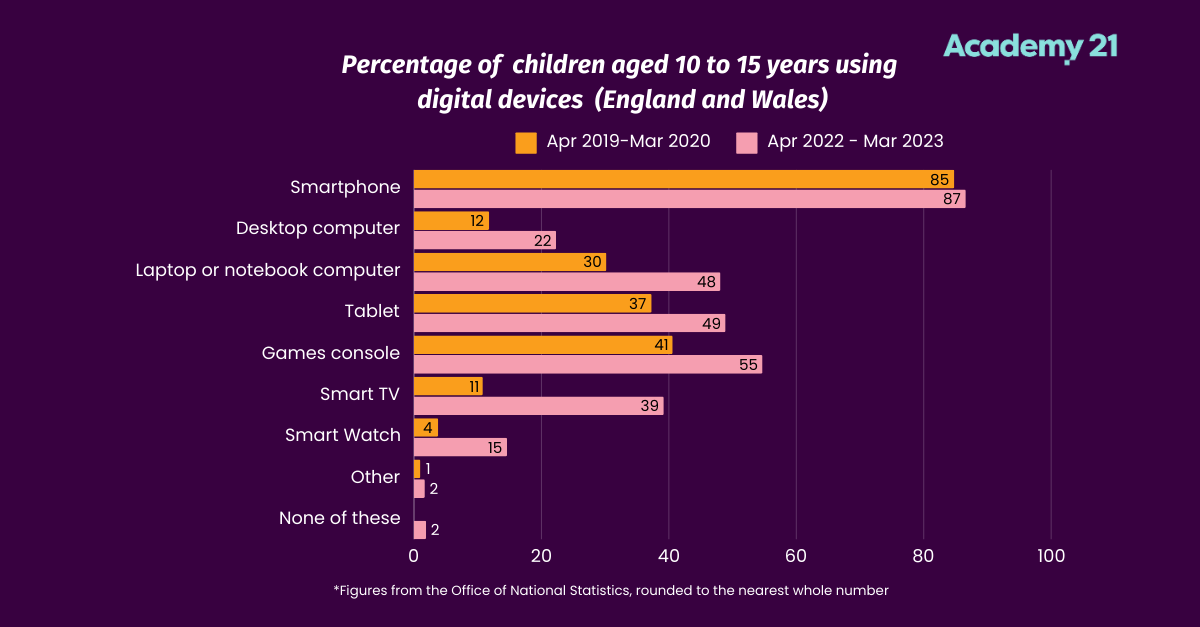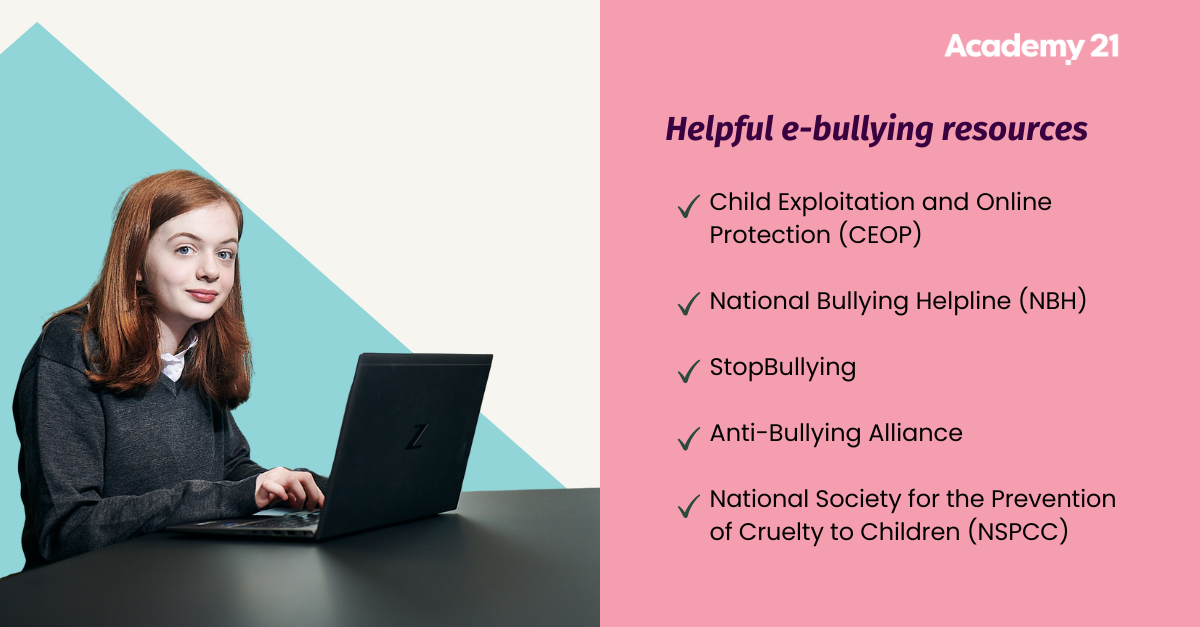What is e-bullying and how we can help prevent it

Anti-Bullying Week has been around since 2002, and it’s disappointing to see that its mission remains just as necessary as it was in its inception. Observed in mid-November across England, Wales, and Northern Ireland, this year’s event encouraged young people to “Choose Respect,” a powerful theme and reminder of the ongoing need for action and empathy.
A study of almost 45,000 pupils in England showed that 23% experience frequent face-to-face bullying, with rates much higher for young people with SEN or disabilities (29%) and for children in receipt of free school meals (29%). And that’s just the picture in physical settings. When we turn to the online world, the statistics are equally concerning.
What is e-bullying?
Firstly, let’s unpack what unhealthy online interaction looks like. E-bullying, also referred to as cyberbullying, is more prevalent in our society now than ever before. It can be defined as deliberate and targeted abuse through digital technologies. There are several ways in which this type of behaviour can take place: social media, messaging platforms, gaming platforms, photo apps and mobile phones. E-bullying is repeated behaviour towards a person or a group which aims to scare, harass, upset or shame those who are targeted.
The growing challenge of e-bullying
Around one in five children aged 10 to 15 in England and Wales (19%) experienced at least one type of online bullying behaviour in the year ending March 2020, equivalent to 764,000 children. Fast-forward to 2024, and it’s likely that this percentage has grown substantially.
Technology continues to shape how our children and young people engage with the world around them. Last year, according to the Office for National Statistics, 86.6% of children aged 10 to 15 used a smartphone to go online. There were significant increases in other types of devices used, with 54.7% of children using a games console, 39.2% using a smart TV (compared with just 10.8% in the year ending March 2020) or 14.6% using a smartwatch. The most popular digital activities were watching videos online, messaging, and playing online games.
Technology has undoubtedly expanded our opportunities and shattered limitations in countless ways. In education, we see its transformative impact firsthand, with online learning enabling personalised support and tailored learning experiences.
However, the general adoption of mobile devices comes with a challenge: how do we keep our students safe online? As educators, we are often students’ first line of support. Therefore, beyond our efforts to teach our students effectively, we need to be aware of how to prevent or mitigate bullying in both physical and online environments.

Steps to minimise the risk of e-bullying for our students
1. Educate about the safe use of technology
Knowledge is power, so whether you’re in an online or onsite setting, your curriculum needs to cover all aspects of e-safety, including how to spot when someone behaves concerningly towards you. Audit your e-safety curriculum to ensure it evolves in line with the pace of technological advances.
Encouraging our students to ‘sense in’ to how they feel when reading messages or viewing content or posts is a really powerful self-awareness strategy. It enables individuals to take action if certain content leaves them feeling uncomfortable. If they can recognise when something makes them feel upset or scared, they are halfway to taking control of the situation by reporting it to someone.
2. Adopt a zero-tolerance approach
You will know best how to do this effectively in your settings. Whether you’re a ‘no phone’ school or whether you embrace smartphone use at appropriate times, ensure it all falls within the parameters of zero-tolerance to e-bullying.
Like any other area of safeguarding, be attuned to changes in your students’ behaviour and openly curious with them about why this might be. Timely intervention is crucial.
3. Prioritise relationships
Relationships are key. The more our students feel comfortable sharing this information with us, the more likely we will be able to intervene and support them in ending e-bullying. This is especially important for students with SEN, who may feel left out and less confident to speak up.
Building strong relationships with students requires being consistently present, approachable, and an active listener. Regularly check in, give them your full attention, and respond empathetically, ensuring they feel heard and understood. Create a safe, non-judgmental space where students can speak openly without fear of judgment.
4. Provide reassurance
Students who share this information with us likely have built themselves up to these conversations. They will be worried about speaking out and the potential ramifications for them.
As professionals working with students in this scenario, it’s essential to take a supportive and encouraging stance and engage in their conversations with empathy. Provide reassurance that they are right to tell you and that you will support them in dealing with it.
5. Offer easy and visual reporting options
Not all students will feel comfortable or able to talk to a trusted adult. Many of our young people prefer the perceived safety of reporting such issues through their technology. Child Exploitation and Online Protection (CEOP) is a superb resource with a wealth of information about this topic. Crucially, there are several easy ways for students to report any online behaviour that is causing them upset, harm, or fear.
Other organisations that can support students are the National Bullying Helpline (NBH) and StopBullying. It is crucial to have this signposting readily available to students, whether by displaying posters around your school and on student apps or in an online context, having these links available on student login portals and platforms.
It might look different depending on whether you serve an online community or an onsite one, but the principle is the same: arm your students with the information they need to act.

Academy21’s approach to preventing e-bullying
At Academy21, safeguarding is at the heart of everything we do. Our commitment to student safety encompasses robust measures to prevent e-bullying and create a secure online learning environment.
Our focus on safeguarding
We adhere to statutory safeguarding guidelines such as the Children’s Act 1989 and the Education Act 2002, ensuring comprehensive protection against harm, including online bullying. Academy21’s teachers and staff are regularly trained on safeguarding and e-safety best practices, enabling them to monitor and address e-bullying concerns effectively as they arise.
Moreover, we empower students to report concerns using multiple accessible channels, including the support section of their student portal. When working with schools and local authorities, we request a designated contact for safeguarding and child protection issues to ensure that any concern is handled promptly, sensitively, and in line with statutory requirements.
Our secure learning environment
Academy21’s secure platforms are designed to prevent misuse and e-bullying, offering data protection and controlled access to classrooms where students engage under teacher supervision. Features such as password-protected access and the absence of peer-to-peer messaging reduce opportunities for harmful behaviour. All lessons are recorded for safeguarding purposes, ensuring that any concerns can be investigated thoroughly and transparently.
E-safety first: Protecting our students against e-bullying
Regardless of whether you teach in a traditional classroom, have some students attending online lessons, or are considering an online alternative provision like Academy21 to meet the specific needs of your students, it’s essential to ensure that all organisations involved in your student’s education have robust protocols and processes in place to safeguard their wellbeing.
Academy21 uses our online learning platform and tools to create a safe, supportive, and welcoming environment for all students. With close teacher supervision and a dedicated team available to offer ongoing support, we prioritise the safety and success of each learner.
If you’d like to learn more about our provision or refer a student, please contact our team below.
Written by
Amy Husband
Posted on
27/11/2024
Updated on
27/11/2024
Topic
Mental healthPost type
Blog


